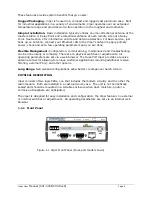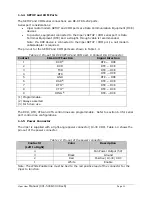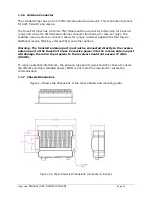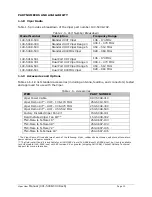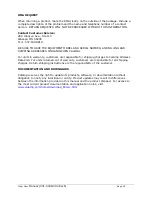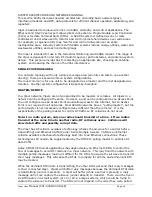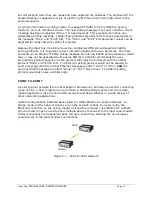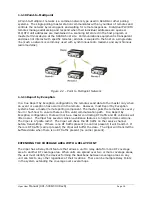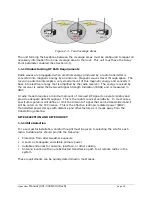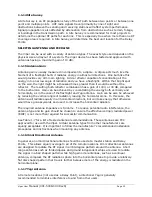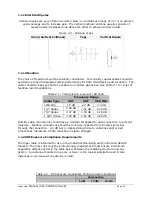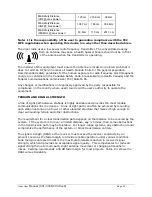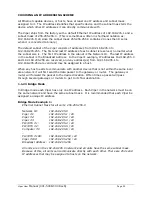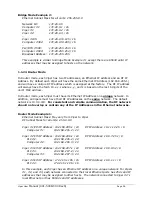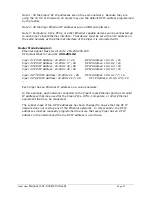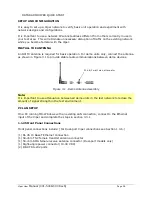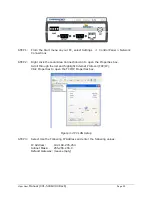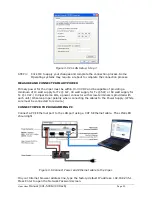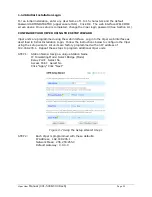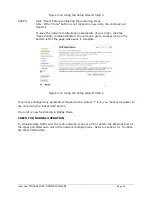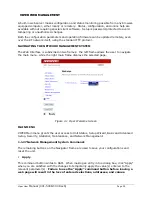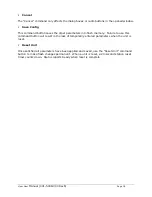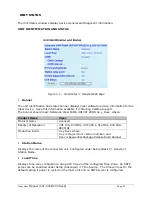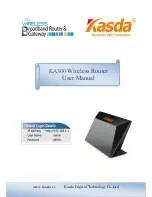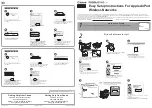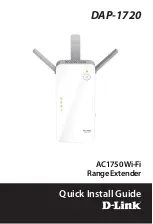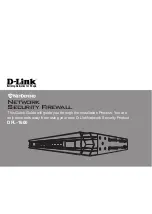
Viper User
Manual (001-5008-000 Rev6)
Page
22
Min Safety Distance
(VHF @ max power)
123cm 218.8cm 389cm
Min Safety Distance
(UHF @ max power)
105.7cm 188cm 334.4cm
Min Safety Distance
(900 MHz @ max power)
63.8cm
115 cm
201.7 cm
Note: It is the responsibility of the user to guarantee compliance with the FCC
MPE regulations when operating this device in a way other than described above.
The Viper radio uses a low power radio frequency transmitter. The concentrated energy
from an antenna may pose a health hazard. People should not be in front
of the antenna when the transmitter is operating.
The installer of this equipment must ensure the antenna is located or pointed such that it
does not emit an RF field in excess of Health Canada limits for the general population.
Recommended safety guidelines for the human exposure to radio frequency electromagnetic
energy are contained in the Canadian Safety Code 6 (available from Health Canada) and the
Federal Communications Commission (FCC) Bulletin 65.
Any changes or modifications not expressly approved by the party responsible for
compliance (in the country where used) could void the user's authority to operate the
equipment.
TERRAIN AND SIGNAL STRENGTH
A line of sight path between stations is highly desirable and provides the most reliable
communications link in all cases. A line of sight path can often be achieved by mounting
each station antenna on a tower or other elevated structure that raises it high enough to
clear surrounding terrain and other obstructions.
The requirement for a clear transmission path depends on the distance to be covered by the
system. If the system is to cover a limited distance, say 3-5 miles, then some obstructions
in the transmission path may be tolerable. For longer-range systems, any obstruction could
compromise the performance of the system, or block transmission entirely.
The signal strength (RSSI) at the receiver must exceed the receiver sensitivity by an
amount known as the fade margin to provide reliable operation under various conditions.
Fade margin (expressed in dB) is the maximum tolerable reduction in received signal
strength, which still provides an acceptable signal quality. This compensates for reduced
signal strength due to multi-path, slight antenna movement or changing atmospheric
losses. CalAmp recommends a 30 dB fade margin for most projects. Table 2.3 shows the
RSSI versus Reliability.
RF Exposure


